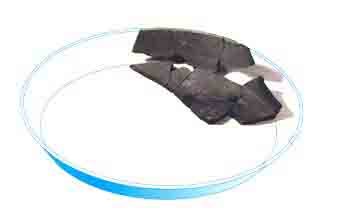Image Details

Courtesy Andrea M. Berlin
Real soldiers eat quiche. Fragments are all that remain of a pan, whose outlines are illustrated here, from first-century C.E. Tel Anafa. The dish’s straight, shallow sides and flat bottom were perfect for Roman-style patinae, a dish similar to present-day quiche. Tel Anafa’s last settlers had few vessels for cosmetic purposes or for large-scale entertaining; they also owned little pottery for basic food processing and preparation, suggesting that they did not grow their own food. Andrea Berlin suggests that all these elements indicate that Tel Anafa’s last inhabitants were Roman or Italian mercenaries guarding Caesarea Philippi, the nearby regional capital. If she is right, it would explain Tel Anafa’s final abandonment around the middle of the first century C.E.: Control of the area had shifted to the Roman prefect at Caesarea Maritima, on the Mediterranean coast, and Tel Anafa no longer mattered. Its former residents were forgotten to history—until 20th-century excavators returned to listen to what their pottery had to say.
